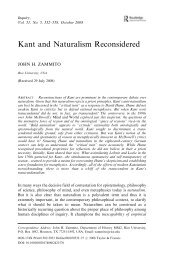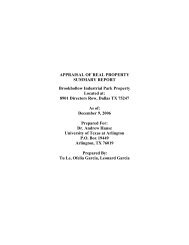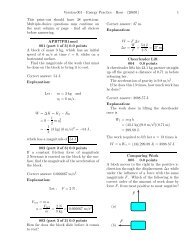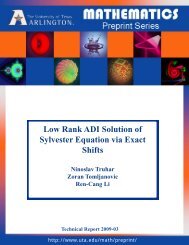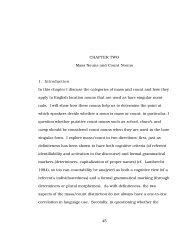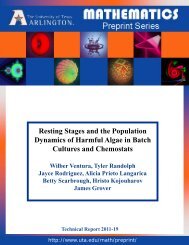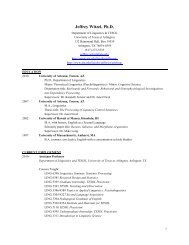Computational Analysis and Paleogenomics of Interspersed ...
Computational Analysis and Paleogenomics of Interspersed ...
Computational Analysis and Paleogenomics of Interspersed ...
You also want an ePaper? Increase the reach of your titles
YUMPU automatically turns print PDFs into web optimized ePapers that Google loves.
44 |Feschotte <strong>and</strong> PrithamThe efficiency <strong>and</strong> precision <strong>of</strong> genome masking strongly depends on thequality <strong>of</strong> the repeat library, both in terms <strong>of</strong> the accuracy <strong>of</strong> consensus sequences<strong>and</strong> <strong>of</strong> their faithful classification. Currently, the task <strong>of</strong> repeat annotation isoverwhelmingly dominated by the use <strong>of</strong> RepeatMasker, a program designednearly 10 years ago by Arian Smit <strong>and</strong> Phil Green. RepeatMasker remainsunpublished to date, but an online server allows one to run the program onany query sequence. The latest version (3.1.0 at the time <strong>of</strong> this publication) <strong>of</strong>the program is also freely downloadable through the server (see Table 2.1 forURL).Sequence comparisons in RepeatMasker are typically performed by theprogram cross_match developed by Phil Green. This program uses an implementation<strong>of</strong> the Smith-Waterman-Gotoh algorithm, which is known for itshigh sensitivity (compared to BLAST, for example). RepeatMasker can alsoaccommodate similarity searches powered by the WU-BLAST 2.0 package(Lopez et al., 2003). Wu-BLAST <strong>of</strong>fers less sensitivity than cross_match, butis less dem<strong>and</strong>ing in terms <strong>of</strong> computational power <strong>and</strong> processing time. TheRepeatMasker output also includes a table describing the location (nucleotidepositions), identity (repeat name <strong>and</strong> classification) as well as the length <strong>and</strong>nucleotide divergence <strong>of</strong> the aligned sequence to the consensus. This later featureis particularly useful to those interested in the biology <strong>of</strong> the repeats themselves,because it provides an instant estimation <strong>of</strong> the relative age <strong>of</strong> the repeat copyidentified (see below). The online server <strong>of</strong> RepeatMasker compares the querysequence to the Repbase libraries, but a locally installed version can be used withany sequence library such as a repeat catalogue compiled by the user.One person’s junk is another person’s treasure:interspersed repeats as markers <strong>of</strong> evolutionDespite the conundrum that repeats pose to genome assembly <strong>and</strong> annotation,the once popular view that all repeats are genomic junk has now become obsolete.Repeats provides a rich “fossil” record <strong>of</strong> ancient <strong>and</strong> recent genome history <strong>and</strong>represent an extraordinary source <strong>of</strong> information about molecular evolutionaryprocesses in general. Many recent l<strong>and</strong>mark publications illustrate how this“paleogenomic” record holds crucial clues about evolutionary events <strong>and</strong> forcesacting to shape the eukaryotic genome (some examples are developed below).Because they are generally evolving under no selective constraint, interspersedrepeats provide useful neutral markers for studying processes <strong>of</strong> mutation <strong>and</strong>selection. It is possible to recognize groups <strong>of</strong> TEs that arose at the same time<strong>and</strong> to follow their fates in different regions <strong>of</strong> the genome or in different species.Furthermore, most ancient TE insertions are very rarely excised (especiallyretrotransposons) <strong>and</strong> removed precisely <strong>and</strong> therefore they can be used as phylogeneticmarkers essentially free <strong>of</strong> homoplasy (Schmitz et al., 2005; Shedlock<strong>and</strong> Okada, 2000). Note: homoplasy refers to a collection <strong>of</strong> phenomena (e.g.convergence) that leads to similarities in character states for reasons other thaninheritance from a common ancestor.Uncorrected pro<strong>of</strong>s — not for distribution



